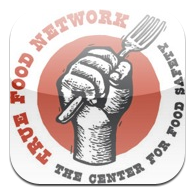Show Synopsis: The two Atari-style aliens attempt to rent a room in the home of the main cast, Master Shake, Frylock and Meatwad and end up working to "corrupt" Meatwad. Hijinks ensue.
Let's start by looking at how the show represents a symbolic model for understand epistemology. The Stanford Dictionary of Philosophy explains "epistemology" to mean " the study of knowledge and justified belief." Understood from the perspective of teaching colonialism, epistemology is an important concept for students to understand in order to dissect the unquestioned assumptions behind different cultural positions and viewpoints. In the show, the Mooninites attempt to justify their evaluation of their Moon culture as "better" than Earth culture by using vertical leap as evaluative criteria. Since this is not a criterion used in cultural comparisons, the absurdity of the criterion illustrates more clearly the system by which this belief is justified for the Mooninites and gives students an opportunity to discuss the mechanisms of epistemology before having to question their own epistemological assumptions about what does and doesn't count as knowledge.
Students can also gain an understanding of the concept of "ideology" by looking at the total sum of these assumptions as discrete systems of belief and social control. In the episode, one of the Mooninites makes the claim that "Using a key to gouge expletives into another's vehicle is a sign of trust and friendship." This is immediately followed by a neighbor of the main cast's exclamation of "Who did this to my freakin' car?!" This interaction can allow students to analyze the ways in which ideological assumptions come into conflict in cultural contact zones.
In order to understand "colonialism," teachers can have students discuss the Mooninites' introduction:
Ignignokt: Hello Carl. I am Ignignokt and this is Err.
Err: I am Err.
Ignignokt: We are Mooninites from the inner core of the moon.
Err: You said it right!
Ignignokt: Our race is hundreds of years beyond yours.
Err: Man, you hear what he's saying?
Ignignokt: Some would say that the Earth is our Moon.
Err: We're the moon.
Ignignokt: But that would belittle the name of our Moon, which is: The Moon.
Err: Point is--we're at the center, not you.
Carl (neighbor): No, the real point is I don't give a damn.
This interaction can be used to discuss Manifest Destiny and the centralizing effect of an ideology that focuses on an insider/outsider model for understanding the world.
I would recommend that students have this episode paired with theoretical readings on colonization so that students can feel comfortable using these academic terms on a subject as non-threatening as a cartoon. Students may also be given creative writing assignments that would allow them to take on these perspectives and work with these concepts in a way that is not culturally intimidating when you have students from diverse backgrounds. Basically, this show provides an approachable way for students to understand current issues with colonialism in current politics by giving them a sort of "neutral" language with which to talk about these concepts before applying them to real-world situations.












